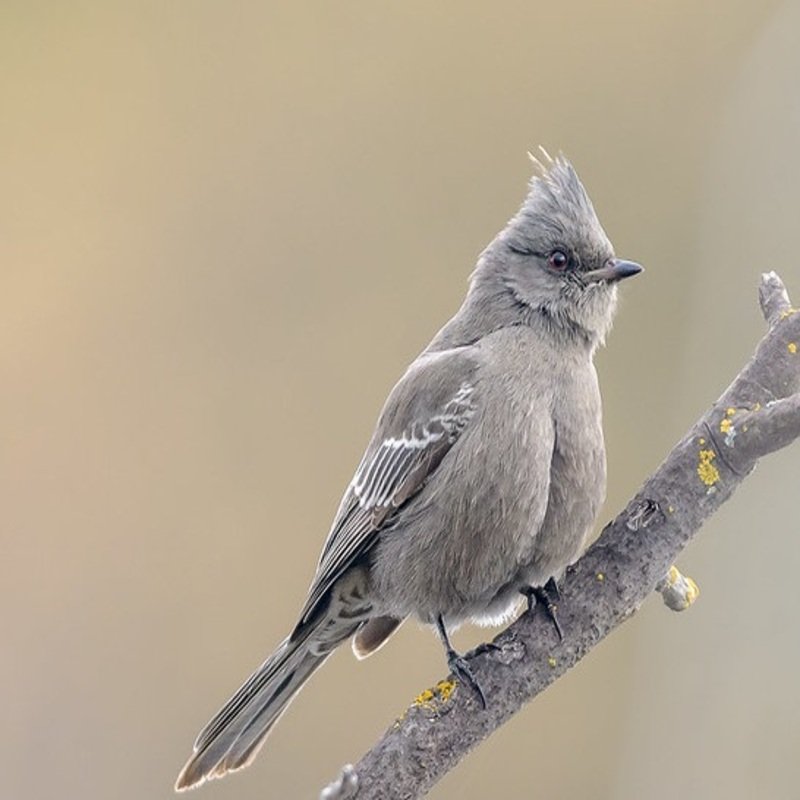The phainopepla, also known as the northern phainopepla, Phainopepla nitens in Latin, is the most northern representative of the Ptiliogonatidae, a family of silky flycatchers that are mostly found in tropical Central America. Its name comes from the Greek phain pepla, which means “shining robe,” and refers to the male’s plumage, which is why it is called that.
Quick Overview: Phainopepla nitens – Phainopepla
Body size: Around 7.75 in (20 cm) and a weight of 23 g (0.8 oz)
Main colors: Black, Gray
Range: Southwestern United States
Migratory Bird: Yes
Best time of the year to see in the U.S.: All Year (January – December)
Conservation Status: Least Concern
Phainopepla Description
The Phainopepla may grow to be around 16 cm in length on average. Their bills are only a few lines long and thin. Males have totally black plumage, whilst females have gray plumage. They have a dark crest, and the males have an entirely black crest. During flying, white wing patches may be seen on the bird. They have a very long tail, and the youngsters have an appearance that is quite similar to that of the female.

Size
These birds have a length of 7.75 in (20 cm) and a weight of 23 g (0.8 oz). Their wings could range 11.5 in (29 cm).
Feeding
The berries of mistletoe are the mainstay of the Phainopepla’s diet. In times when these berries are difficult to come by, they feed on tiny insects
Habitat
The Phainopepla may be found in a variety of arid environments. They are most commonly found in dry scrub habitats such as washes, riparian regions, and other similar environments. The oak chaparral and riparian oak woods are their preferred habitats if they can be found near coastal regions.

Behavior
The Phainopepla has a special connection with mistletoe berries, which are its primary food source. Mistletoe berries are dependent on a bird to place them on a limb of a tree in order for them to grow.
Phainopepla nitens Scientific Classification
- Kingdom: Animalia
- Phylum: Chordata
- Subphylum: Chelicerata
- Class: Aves
- Order: Passeriformes
- Family: Ptiliogonatidae
- Genus: Phinopepla
- Species: Phinopepla nitens
Other common names
Also called the Northern Phainopepla.
Best time of the year to see
In the United States, the best time of year to see these birds is all year round, regardless of the season. This refers to any month of the year between January and December.
Distribution of the Phainopepla in the USA
Phainopeplas may be found in central California, southern Nevada, southern Utah, southern New Mexico, and western Texas. During the winter, these birds may be found in southern California, southern Nevada, central Arizona, southern New Mexico, and southern Texas regions of the United States.
